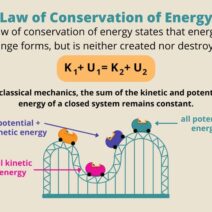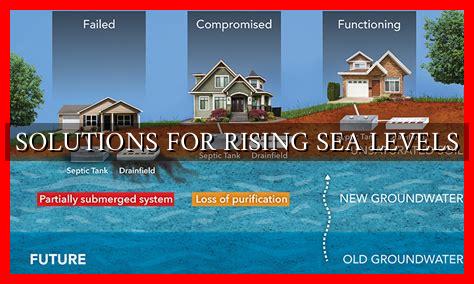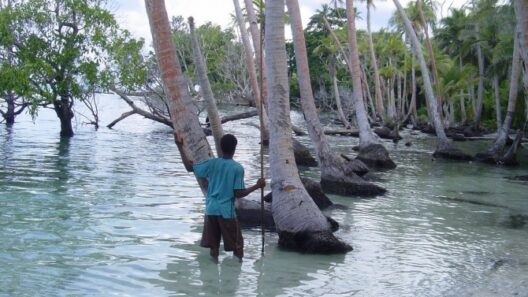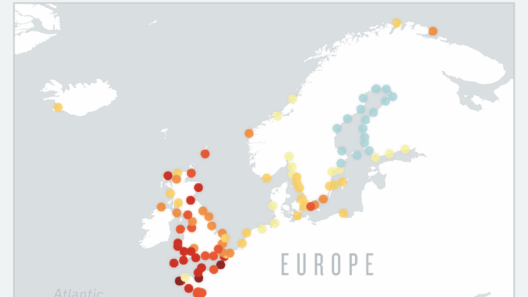The inexorable rise of sea levels is a phenomenon that poses a significant existential risk to coastal communities worldwide. This environmental challenge demands our immediate attention and innovative solutions. But what if we could turn the tides on rising sea levels? Could we champion inventive ideas and scientific innovations to mitigate this crisis? Let us embark on a journey to explore potential pathways to tackle ocean-level rise.
Understanding Sea-Level Rise
Before delving into possible remedies, we must first grasp the mechanisms underpinning rising sea levels. Predominantly, two factors contribute to this unsettling trend: thermal expansion and glacial melt. As global temperatures escalate due to climate change, oceans absorb heat, causing water to expand. Concurrently, melting ice sheets and glaciers release freshwater into the oceans, exacerbating the phenomenon. The combination of these processes culminates in a slow but relentless rise in sea levels, which threatens vast populations and ecosystems.
Exploring Nature-Based Solutions
Nature itself may hold the keys to combating this crisis through various ecosystem-based strategies. Restoration and conservation of wetlands, mangroves, and coral reefs can provide significant buffers against the encroaching seas. These natural barriers not only absorb wave energy but also stabilize shorelines, enhancing resilience against flooding.
Ecological Engineering and Coastal Restoration
Engaging in ecological engineering may offer transformative advantages in our fight against sea levels. By rehabilitating coastal ecosystems, we can harness their natural abilities to adapt to changing conditions. For instance, the restoration of salt marshes has been shown to boost carbon sequestration while simultaneously providing habitats for countless marine species. Furthermore, increasing biodiversity strengthens ecosystem integrity, fostering resilience to environmental stressors.
Innovations in Algal Blooms
Interestingly, certain types of algae can absorb carbon dioxide and other pollutants at a remarkable rate. Harnessing this potential through bioengineering could yield substantial benefits. If we could cultivate and deploy these algae effectively, marketing them as both a resource and a tactic against climate change could revolutionize our approach to environmental stewardship.
Technological Advancements: Harnessing the Power of Science
While nature offers invaluable solutions, technology must also play a role in confronting rising sea levels. Innovations in engineering and design can redefine our built environment. For instance, the development of floating cities represents a radical rethinking of urban planning. These buoyant structures could adapt to fluctuating water levels, providing safe havens for populations displaced by rising seas.
Elevated Infrastructure: A Necessity for Coastal Cities
In regions where construction is feasible, elevating infrastructure is indispensable. More cities are considering developed strategies to raise roads, buildings, and critical facilities above projected flood levels. This adaptive approach not only minimizes immediate damage but also enhances urban resilience against future threats. However, implementing such strategies on a grand scale demands significant political will and financial investment.
Desalinization: Quenching Thirst While Reducing Pressure on Water Resources
As saltwater intrudes into freshwater supplies through rising sea levels, coastal communities may experience a dire need for fresh water. Desalinization technology offers an intriguing solution by converting seawater into potable water. While this technology is not without its environmental drawbacks, such as energy consumption and impacts on marine ecosystems, advancements in energy efficiency may offer a path forward. Moreover, integrating renewable energy sources in desalinization processes could mitigate negative environmental effects.
Policy and Governance: Strong Frameworks for Implementation
The complexity of climate change necessitates a robust policy framework that encourages action at both local and global levels. Policymakers must develop comprehensive strategies to combat sea-level rise through incentivized investments in infrastructure, ecological restoration, and research initiatives. Collaborative governance, involving stakeholders from various sectors, will facilitate innovative solutions and broad community engagement.
Community Engagement: Empowering the Public
Ultimately, addressing the challenge of rising sea levels requires collective action and grassroots initiatives. Communities play a pivotal role in developing adaptive strategies tailored to their unique contexts. By fostering public awareness and engagement through education campaigns, individuals can instigate broader change. Whether organizing clean-up efforts, restoring local ecosystems, or advocating for environmentally-friendly policies, the influence of informed communities should not be underestimated.
Conclusion: Understanding Our Role in the Environment
As climate change persists unabated, proactive measures to combat rising sea levels will be essential to preserve our coastal communities and ecosystems. By embracing a multifaceted approach that combines nature-based solutions, technological innovations, thoughtful policies, and community engagement, we can take significant strides toward not only stopping ocean-level rise but also moving toward a more sustainable future. Every facet of society has a role to play in this endeavor; after all, the question emerges: how far are we willing to go to mitigate the consequences of rising sea levels for future generations?







